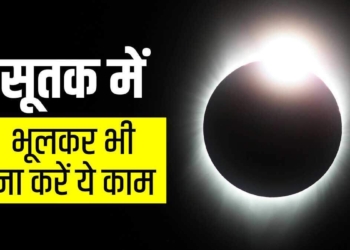Galileo Galiley – Introduction
Galileo Galiley was an Italian astronomer, physicist and mathematician. Which is sometimes described as a polygon. He is called the father of observation astronomy, the father of modern general physics, scientific method and the father of modern science or modern physics. Galileo was the first to use binoculars for astronomical observations to discover pits and mountains on the four moon of the moon and Jupiter, often known as Galillian satellites. He observed the feet of Venus and determined the rotation of the sun by studying solar spots.
Galileo concluded that Aristotle’s world map, which was widely considered in his time, was wrong. Instead, he supported the ‘Heliosantric Theory’ of Copernicus. His inventions with telescope revolutionized astronomy and accepted the Copernican Heliosantric system, but his advocacy of that system eventually began an investigation against him. He was prosecuted and kept under house arrest for the last eight years of his life.
Galileo Galiley’s Early Life
Galileo Galiley was born on 15 February 1564 in a family of musicians in Pisa, Modern Italy. His father, Vinseenzo Galiley, was a famous musician of the time. He played an instrument called ‘Lute’, which later evolved into guitar and bango. During his musical composition, Vinseenzo Galelie studied the stress of the stretched cord or wire and the sound arising out of it and found that there was a connection between the stress of the string or string and the sound arising from it. His son Galileo conducted a scientific study of the results of the wires drawn or the interrelations of the sounds emanating from the wires.
Galileo’s family moved to Florence in the early 1570s, where the Galilee family lived for generations. As a teenager, Galileo studied at school in Valombrosa near Florence, and then passed matriculation at Pisa University in 1581, where she had to study therapy. However, he was more interested in mathematics and despite his father’s opposition, he decided to adopt mathematical subjects and philosophy as his profession.
Scientific life of Galileo Galiley
From 1581, Galileo began to teach himself Aristotellian philosophy and mathematics. In 1585, Galileo left the university without obtaining a degree and for many years he gave mathematics private education in Florence and Sienna. In 1588 he began to work as a teacher at Academia Delle Aarti Del Designo in Florence. In 1589, he began working as a mathematics lecturer in Pisa. From 1592, he started teaching geometry, mechanics and astronomy at Pauda University. He held this position till 1610. While in this post, he worked on basic science (dynamic, astronomy) and practical science (strength of material, advanced telescope etc.).
Galileo Galiley and Physics
Galileo established the equations of speed in physics. His law of inertia is famous. He proved with his famous experiment on the tower of Pisa that the pace of falling of goods does not depend on his mass. For the first time, he proved that the projection of the projection in the vacuum is paralyzed but how could he deny the results of his experiments, which were against the old beliefs and which he had interpreted with honesty. Despite his loyalty to the church, his knowledge and discretion prevented him from understanding any old concept of the church without experimentation and mathematics. The church considered it a disobedience. The foundation of what we call the principle of relativity also laid the foundation by Galileo Galiley.
He said, “Whether a body is stable or walking in a straight line with a uniform velocity, the rules of physics remain the same. No conditions can be extremely stable or extremely dynamic. It later basic for Newton’s rules The structure provided. Galileo was also interested in painting.
Galileo Galelie’s mathematical knowledge
He was interested in astrology, which was then associated with mathematics and astronomy. Galileo would probably be inherited by the skill of making accurate mathematical analysis from his father Vinseenzo Galiley and his working style closely. Vincanzo was a famous composer and played ‘lute’ who later took the form of guitar and Benjo.
Experiments of Galileo Galiley with science
He made experiments for the first time in physics which led to the “non-unleashed relationship”. It then came to know that there is a connection between the stress (or wire) stress (or wire) of a musical instrument, and the frequency is proportional to the square of tension.
Galileo was the first to try to measure the speed of light. Galileo and one of his assistants climbed lanterns on the peaks of different mountains standing away in the dark night. As soon as he saw the light of Galileo’s lantern, he instructed his assistant to open the lid of the lantern. Galileo had to measure the time interval between opening the lid of its lantern and appearing for the light of its assistant’s lantern. He knew the distance between the mountains. Thus they got the speed of light.
Galileo decided to repeat his experimental conclusions. This time she selected two hills at a distance even more than before. He again repeated the same old lantern process and this time the time interval was the same as before. From this he concluded that the speed of light was much shorter than the response of their auxiliary and it was not possible to measure the actual speed of light from their equipment.
Galileo studied the paravalaya and concluded that if friction in the atmosphere is considered zero and an object is thrown with a uniform acceleration, it would follow the paralysis path and fall back to Earth. But due to the friction present in the atmosphere and the presence of some forces unknown till that time, he could not give the correct mathematical interpretation of his principle and he was aware of this, so he also said that his principle was not necessary. It is true for anyone. This also applies to planets like bodies.
The telescope was invented by Galileo Galiley
Galileo Galiley had understood the interrelationship between mathematics, theoretical physics and practical physics long before today. While studying the paralysis, he concluded that any body thrown on the earth under similar acceleration will fall back to the earth following the paralysis path, if the friction force in the air is negligible. In 1608–9, Galileo Galiley came to know about the invented telescope in Holland.
Hearing his description, he himself created a more sophisticated and powerful telescope. Which he publicly presented on 25 August 1609. He discovered the Moon of Jupiter and proved that the galaxy is made of many stars.
Galileo created around 200 telescopes and donated them to various educational institutions for astronomical observation. He wrote his book in Italian language so that even a common man can read it. Since Galileo denied the ideas of the church, he faced Inquisition and many other tortures. Galileo was a great supporter of scientific thinking.
Galileo can be called the father of modern science in the true sense. The invention of Galileo’s binoculars made him famous in the world. He was the first to discover 4 Moon of Jupiter. First saw the place of the Sun and the arts of Venus. During his experiments, he concluded that all the planets revolve around the Sun.
Galileo Galiley’s family life
Despite being a Roman Catholic, Galileo gave birth to three children without marrying Marina Gamba. They had two daughters, Virginia (born 1600) and Livia (born 1601), and a son, Vinseenzo (born 1606).
Dispute with Galileo Galiley, Copernism and Church
Galileo’s growing clear Copernicism began harassing him. In 1613, he wrote a letter about the problem of connecting Copernican theory to his student Bendeto Castill (1577–1644) in Pisa with some Articles of the Bible. False copies of this letter were sent to Rome for investigation by Galileo’s enemies, and they had to retrieve the letter and send an accurate copy.
Galileo was called Rome in 1633. During his first presence before the Inquisition, he encountered an order of 1616 that refused him to discuss the Copernican theory. In his defense, Galileo presented a letter from Cardinal Bellermine, who had died by then, in which he warned him not to catch or defend the principles. The case was somewhat stalled, and, which could be called only one argument,
Galileo admitted that he had exaggerated his case. He was deeply doubted by Vidhar and sentenced to life imprisonment. There is no evidence that Galileo was once in the dungeon or was tortured; During the Inquisition Procedure, he stayed at the house of the Tuscan Ambassador in most of the Vatican and for some time in a comfortable apartment in the Inquisition Building.
Some famous discoveries of Galileo Galiley
Mountains Jupiter’s Moon on the Moon, the Charan of Venus Venus, the rings of Saturn falling, the principle of inertia
Galileo Galiley dies
Galileo was 70 years old. Still continued to work. Wrote his unpublished study in Vienna, due to his interest in telescope, he was interrupted in 1609 and continued intermittently. Inspired by Italy, the book was published in 1638 under the title Leiden, Discosercy e Demstrazioni Matametecte Inteorno E -Nuowe Sciences Atananti Alla Mechanica (Dialogues Consigning the New Sciences) in the Netherlands.
Here Galileo first discovered the bending and rupture of the rays and summarizing its mathematical and experimental probe of speed, including a mixture of two speeds, continuous speed and similar acceleration. . By then Galileo had become blind and spent his time working with a young student Vinseenzo Vivyyani.
On January 8, 1642, Galileo died due to fever and heartbeat at the age of 77. The Grand Duke of Tuscany, Ferdinando II, wanted him to be buried in the main cave of the Basilica of Santa Cross, next to the graves of his father and other ancestors, and a marble tomb was built in his honor.
However, Ferdinando II’s decision was later canceled, because Galileo was condemned by the Catholic Church for “serious doubts”, due to opposition from Pope Urban VIII and her nephew, Cardinal Francesco Barberini. For this reason, she was buried in a small room in the southern transspt of Basilica. After a memorial in his honor in 1737, he was again buried in the main part of Basilica. During this time three fingers and a tooth were extracted from his remains. These fingers are currently displayed at Museo Galileo in Florence, Italy.
Galileo’s contribution to science was very large. He helped to bring revolution in astronomy and also contributed significantly to physics. His work on scientific method helped to lay the foundation of modern science. Galileo was a talented scientist and courageous thinker and his work still inspires scientists.










